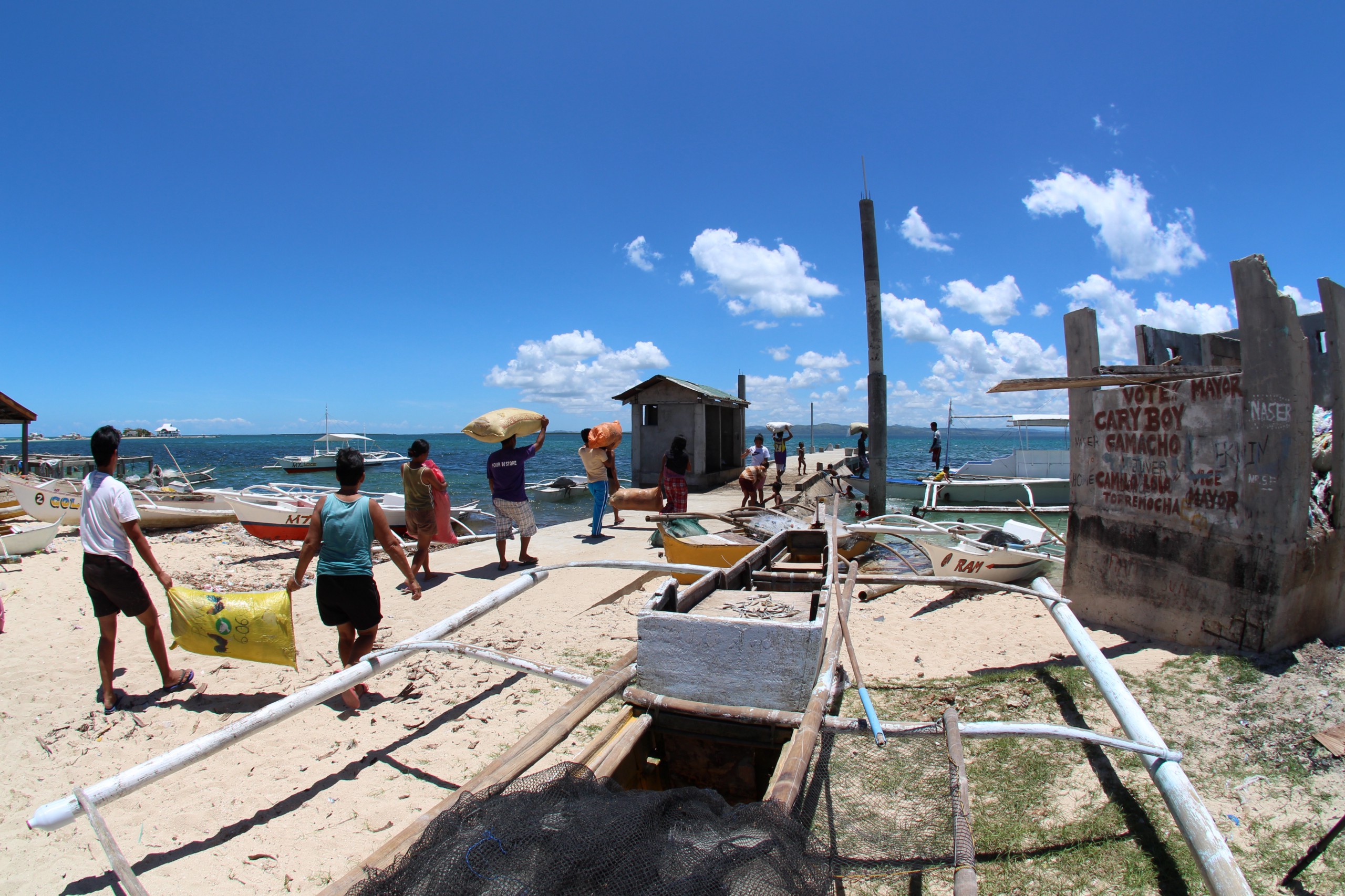

Old fishing nets can be a serious problem for coastal communities. The durable nylon they’re made from is great when they’re in use, but once discarded, the nylon lingers. Left in the ocean, it continues to catch fish, depleting local stock and damaging the marine environment.
According to the United Nations Environment Programme (UNEP), abandoned, lost, or otherwise discarded fishing gear (like nets) makes up about 10 percent of marine waste.
The Net-Works program is tackling this problem by encouraging fishing communities to collect and sell old nets–so they can be turned into carpet tiles. The program is a highly international collaboration between the Zoological Society of London (ZSL); U.S.-based carpet manufacturer Interface; and yarn supplier Aquafil, which recycles the nets–shipped in by communities in the Philippines–into nylon polymer for carpet tiles at its factory in Slovenia.
“Originally it was a cleanup operation,” explained Farinoz Daneshpay, ZSL’s Net-Works coordinator. “But now we’re tackling the problem at source “¦ you’ve got fishermen using their nets, and when they get to the end of [the net’s] life they are selling them straight into Net-Works so they never actually enter the marine environment.”

Net-Works’ first project, which began in 2012, was at the Danajon Bank, a double-barrier reef in the central Visayas region of the Philippines. Its second is in the country’s Bantayan Islands. By the end of 2014, Net-Works estimated it had collected over 91,000 pounds of discarded fishing nets.
ZSL has undertaken conservation projects in the Philippines for nearly 20 years and is responsible for placing local infrastructure for the projects, including helping to set up the community banking operations that ensure everyone gets paid.
Using its local community organizers, ZSL arranges for collection and cleaning of the nets, and transport to hubs where they are baled for shipping.
The machine that compresses the fishing nets into bales is a Net-Works innovation in its own right.
“There was a lot of engineering expertise that went into designing a bailer that could compress the nets down to a density that would be efficient for international shipping,” said Daneshpay. “We went from a downwards levering, Dr. Who-style box to something that is horizontal with a kind of large corkscrew on the end that gets twisted [so the nets are] compressed that way. It was a big undertaking to get something that was easy–it has to operate in an environment where there is no electricity. It needed to be mechanical but easy to use and durable.”
The machine turns mountains of collected nets into 88-pound bales, which are shipped to the Aquafil factory in Slovenia for recycling. A shipping container takes 240 bales, which ZSL estimates at about 22,000 pounds of nets. Then Interface, a company that prides itself on its sustainability initiatives, buys the material and manufactures the carpet tiles.

“From ZSL’s perspective it’s a chance to work in a positive way with business,” said Daneshpay. “I think too often conservation organizations are seen as finger pointing, rather than collaborating with the private sector.”
The scheme has proved so successful that the Net-Works team is already expanding into a third site in the Philippines, in Northern Iloilo. It is also planning a new project in Africa, in the Lake Ossa region of Cameroon. Net collection on that project is expected to start later this year.


How We Get To Next was a magazine that explored the future of science, technology, and culture from 2014 to 2019. This article is part of our Nature & Climate section, which looks at how human activity is changing the planet–for better or worse. Click the logo to read more.
